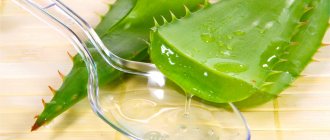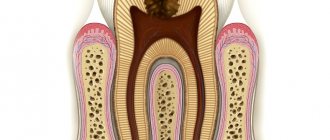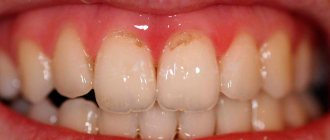A fistula always comes suddenly, when the inflammation has already been cured or the surgical wound has long healed. Its appearance cannot be predicted, although its formation does not occur without symptoms, but it is impossible to guess that a fistula will occur in this place. But it is very difficult to confuse an emerging fistula with something else.
- What is a fistula?
- Types of fistulas
- Causes of fistulas
- Symptoms of appearance
- Diagnostic methods
- Methods for treating fistulas
- Prevention of fistulas
How to cure fistula with folk remedies
Malfunctions in the functioning of organs and systems of the human body, as well as surgical intervention, can cause the occurrence of all kinds of pathologies. One of the most common is the formation of a fistula or fistula. Such a neoplasm can be either external or internal.
A fistula is a channel of epithelial tissue that is formed as a result of the development of an inflammatory process, accompanied by the appearance of cavities with purulent contents. Appears, as a rule, due to the lack of another outlet through which pus could be released.
What is a fistula?
A fistula is an anastomosis formed as a result of a pathological process between the hollow organs of the gastrointestinal tract and/or genitourinary system. A fistula is also a convoluted tubular passage from an organ, passing through soft tissues with access to the skin.
A more euphonious name for a fistula, borrowed from Latin, is “fistula,” but this medical concept is broader, since it also includes artificially formed anastomosis, such as a surgically created fistula between a vein and an artery in dialysis patients. In one form, a fistula is a fistula; in another, it is an artificially created anastomosis; a fistula is always a miraculous pathology.
A fistula always has a beginning - an internal opening, localized in the primary focus of inflammation with suppuration. The beginning of a fistula can be a non-healing wound from injury or surgery, which is especially typical for organs of the gastrointestinal tract that produce secretions: gastric, intestinal or pancreatic juice, bile.
The external opening of the fistula can open into another organ or onto the skin, as in the case of a rectal fistula, but this opening is not necessary - some fistula tracts blindly end in soft tissues, muscles or fiber, forming purulent cyst-like cavities there - leaks.
Fistula and its treatment with traditional medicine
The main manifestations of this pathology:
- pain in the affected area,
- chills,
- temperature increase,
- the appearance of a neoplasm with purulent contents.
Treatment of pathology should be comprehensive, including both traditional and folk therapy.
There are many means that help eliminate such a defect. Before using any medicine, consult a specialist. Otherwise, you may make the situation worse and harm yourself even more.
Use of wood ash
This remedy has been used to treat this disease since ancient times. Wood ash has antiseptic properties. In addition, it helps accelerate regeneration processes.
To prepare a medicinal potion, take sifted wood ash, literally a few handfuls, place in a saucepan filled with seven liters of water, boil for thirty minutes. Take gauze, fold it in several layers and filter the resulting medicine through it.
After the broth has cooled slightly, use it to wash external fistulas. In addition, this composition can be added to the bath while bathing. The duration of the procedure is at least half an hour. Such procedures help improve the patient’s condition, reduce the size of the fistula, and, consequently, heal.
Treatment with eucalyptus
This plant contains a large number of healing, and, importantly, unique properties. The substances found in eucalyptus help not only eliminate the inflammatory process, but also significantly accelerate regenerative processes.
Take the leaves of the plant, finely chop and pour in refined vegetable oil. Infuse this mixture in a dark, warm place for 24 hours. After the time has passed, take the onion, grate it on a fine grater and add to the infusion.
Transfer the prepared mass into several layers of gauze folded and tie into a knot. Apply the resulting lotion to the affected area, secure with a bandage, and leave for half an hour. This procedure must be carried out several times a day. In addition, periodically treat the suppuration with eucalyptus infusion. When the fistula opens, apply a cut aloe leaf.
Chamomile and calendula will help cure the disease
Chamomile has an antiseptic effect.
In addition, chamomile can easily eliminate the inflammatory process. You will need pre-dried plant flowers. Pour boiled water over five grams of raw material and leave to steep for about an hour or two. Filter and use the product for daily rinsing of fistulas. Calendula infusion is prepared in the same way. An infusion of calendula flowers is an excellent medicine that helps quickly eliminate inflammation. Used in the same way as chamomile infusion.
Uses of aloe
Wash about fifteen leaves of young aloe, finely chop, then add at least half a kilogram of honey to this mass, mix thoroughly.
Transfer the prepared mixture into a jar and place in the refrigerator for at least seven days. Stir the product periodically.
Take three grams of the medicine several times a day, preferably before meals. The duration of the treatment course is sixty days, no less.
Dental fistula
Very often fistulas are localized on the gums. And their appearance is explained by the presence of an inflammatory process. If you are faced with a similar problem, do not delay visiting the dentist. Otherwise, you risk losing your tooth. Folk remedies will help cure inflammation and preserve teeth.
- Pour a few tablespoons of finely chopped St. John's wort into 300 milliliters of water and bring to a boil. Place the prepared pulp on cellophane and apply to the sore spot. Repeat this procedure daily.
- Dilute a spoonful of baking soda in two hundred milliliters of water. Add a couple of drops of iodine to this. Use this solution for daily rinsing.
- Grind chamomile flowers, yarrow, oak bark and sage. Pour 200 ml of boiling water over this vegetable mixture. Infuse the product for five hours. Rinse your mouth with this infusion at least once a day.
Preparation of healing ointment
To a greater extent, a similar composition is used to cure fistulas in the vagina or rectum, with a cyst of the coccygeal duct. Finely chop the dried oak bark, water pepper grass and toadflax flowers, combine all the ingredients and mix thoroughly.
Combine 200 grams of the vegetable mixture with pork fat and place in an oven preheated to sixty degrees for seven hours. Take out the prepared ointment and cool. Take a sterile cotton swab, soak it in the ointment and apply it to the affected area. The duration of the treatment course is thirty days.
Other, no less effective means for the treatment of purulent formations
To prepare this product you will need vodka and olive oil.
Connect both components. Treat the affected areas with this mixture at least twice a day. Then apply a cabbage leaf to this place (it will draw out the pus) and secure with a bandage. The duration of the treatment course is at least two weeks. You will need mumiyo and aloe. Soak the mummy in water until a dark-colored solution begins to form, then combine it with aloe juice. Soak a bandage folded in several layers in the resulting liquid and apply to the affected area for at least two hours. Cover the top with compression paper and secure. It is advisable to carry out this procedure before going to bed.
Relapse Prevention
Absolutely no one is immune from the occurrence of this disease. To prevent the occurrence of gum fistula, try to promptly eliminate all dental problems and treat them. In addition, be sure to get checked by your dentist at least twice a year. Prevention is, first of all, preventing the penetration and spread of infection.
Methods for diagnosing fistulas
If you observe at least one of the above symptoms, you need to immediately consult a doctor to make a correct diagnosis. It should be noted that specialists do not encounter any particular difficulties in diagnosing such a deviation. After all, it is based on collecting anamnesis, studying the characteristic complaints of patients, the type of fistula, analyzing the composition and amount of fluid released, as well as changing the functioning of the affected organs.
To clarify the direction and length of the fistula canal, as well as its direct connection with the lesion, probing and radiography are often used together with the introduction of a contrast agent into the passage.
By the way, you can clarify the diagnosis of “gastric fistula” using tests for the presence of hydrochloric acid. If it is present in the canal, then this indicates the gastric location of the fistula. But urinary fistula is characterized by the presence of uric acid salts.
It should be especially noted that external fistulas are much easier to diagnose than internal ones. After all, they have a characteristic hole that is visible to a specialist with the naked eye. As for internal fistulas, they should be identified not only by the patient’s existing symptoms and complaints, but also using diagnostic methods such as ultrasound, radiography and endoscopy.
Treatment of fistula with folk remedies at home
Usually they arise due to suppuration, which makes its way into the body, and not out, and then opens. Such ducts do not become overgrown due to the fact that some kind of secretions constantly pass through them. Fistula is often treated with folk remedies - this is an additional and very effective procedure that will not keep you waiting long for results.
Methods for treating fistulas
Fistulas rarely close on their own; this can only be hoped for by creating favorable conditions, for example, limiting and partially controlling the movement of feces through the rectum using cleansing enemas. In the vast majority of cases, conservative therapy is ineffective; the only radical treatment is surgical, that is, excision of the pathological area, including reconstruction of the missing tissue.
Technically simple surgical intervention, including endoscopic, and a hundred surgical modifications cannot cure about half of the patients who suffer from relapses. It is especially difficult to achieve success with intestinal and urinary fistulas, since they are always contaminated with microflora. In some cases, it is necessary to resort to the formation of an intestinal stoma, temporarily stopping the movement of feces through the pathologically changed area of the intestine for several months.
In isolated cases, they resort to “old-fashioned methods” of treatment with scraping the mucous membrane of the tract, burning it with chemical reagents and enzymes, achieving sticking of the walls. Better results - in approximately 50% - are achieved by introducing fibrin glue into the fistula tract, which glues the walls together.
Tampons made of biomaterials act similarly to glue, sealing the internal opening; emptying of the passage can cause the walls to stick together and close the fistula.
Until now, the role of antibiotics in the treatment of fistulas caused by inflammation has not been determined, since drugs are not able to penetrate into the infiltrate due to massive scar changes. However, with fistula tracts due to Crohn's disease, specific drug therapy is mandatory and not unsuccessful.
Surgery for fistulas using the LIFT method
Ligature fistulas
After opening the abscess, a long-functioning ligature fistula remains, the therapy of which can be continued at home using natural remedies. Separation or removal of the infected ligature ensures rapid healing. In cases where the ligature cannot be detected with a clamp, patients undergo fistulography. After this, depending on the fistulogram data, an operation is performed: the scar is excised along with the granuloma, and therapy can be prescribed by a doctor at home under normal conditions; the defect in the aponeurosis is sutured with a removable suture or absorbable suture material.
- careful control over the sterility of the suture material;
- strict adherence to asepsis during surgery is a good prevention of ligature fistulas;
- ligation of the crossed vessels should be carried out with minimal entrapment of surrounding tissues with thin threads of synthetic absorbable material (Dexon No. 3. 4.0; Vicryl No. 3.0);
- washing the wound not with natural remedies, but with medical solutions before stitching it up and further qualitatively getting rid of the fistula;
- with the exception of the skin, when suturing a wound of the abdominal (chest) wall, synthetic suture material (Dexon, Vicryl No. 3.0, 1, 2) should be used, which prevents the appearance of a fistula;
- with appropriate indications for prevention, the use of antibacterial agents and drugs is justified. To prevent the appearance of fistulas of this type, preference should be given to antiseptics (Sepronex, iodopirone, chlorhexidine, resorcinol - O.P. Sobeshchuk, A.P. Krasilnikov, A.A. Adarchenko, 2000).
Causes of a fistula on the gums in an adult
A fistula is formed due to an infectious purulent process in the dental canal. Pathology can occur for the following reasons:
- Deep caries and untimely treatment;
- Newly emerging periodontitis and periostitis with the formation of pus;
- Chronic periodontitis, damage to the walls of the tooth root;
- Cystic formations;
- Oncology;
- Pulpitis, damage to the tooth root;
- Granuloma.
Fistula also occurs after tooth extraction. This is a common pathology that occurs as a result of infection in the wound.
A fistula after dental treatment can form, for example, due to infection as a result of errors in the treatment of caries. Improper filling of a tooth can also lead to the development of pathology. In this case, a tooth root fistula is formed when pus, having passed through the dental canal, breaks into the surrounding tissue. The most common fistula of the upper and front teeth occurs.
Alcohol, smoking, stress, exacerbations of chronic diseases, abuse of carbohydrates, lack of nutrition, chronic diseases - all these factors increase the root causes of the disease.
Natural herbal treatment
Against it on the gums, use oil infused with eucalyptus leaves with one chopped onion. Apply the mixture once a day for 20 minutes. To heal any fistula, you will need the usual remedies. It is enough to take two parts of calendula color, yarrow flowers and grass, dandelion root, tansy grass and inflorescences. Grind all this in a meat grinder and add one part of Vishnevsky's liniment, ichthyol ointment and calendula oil until a homogeneous mass is formed.
To prepare a folk recipe with natural remedies, brew two tablespoons of St. John's wort with 1.5 glasses of water. Express. Place the leaves on cellophane and wrap the sore spot. After the procedure, rinse with the remaining St. John's wort water. Apply the tincture until pus begins to come out.
Home therapy with olive oil and vodka. Take equal amounts of olive oil and vodka and mix. Use the resulting mixture with safe products to wipe the area where the fistula is; place a cabbage leaf on top with the outer side. You need to use a compress for treatment two to three times a day. After two weeks you will feel better. Procedures cannot be skipped.
Traditional therapy with aloe
- It has proven itself excellent in the fight against fistula and aloe. For this recipe, take twelve leaves from aloe (the flower must be older than two years), rinse them in boiled water. Then chop them finely and place them in a liter jar. Add honey to the fistula composition - an excellent alternative medicine. Infuse in a dark place at home, but do not forget to stir once a day. After eight days, strain the tincture two to three times and take a teaspoon before meals three times a day.
- Another method of treatment, simply at home, is a folk remedy with aloe for fistula - by adding mumiyo juice. Soak the mummy in water until it becomes dark in color, extract the juice from it and mix it with aloe juice (an excellent healing agent of unique medicine). Soak the bandage in the resulting liquid and apply it to the area with the fistula for a long period of the course.
Healing ointment for healing formations in the rectum and treating the vagina. To prepare the product you will need oak bark, toadflax flowers, water pepper herb, lard - a folk ingredient that is found in many similar recipes. You finely chop all this and pour melted lard in a ratio of 1: 2. Place the container with this mixture in the oven over low heat for at least half a day. In your usual home conditions, when treating a fistula using folk remedies, make tampons, coat them with ointment and apply. Change every five hours.
What are fistulas?
Taking into account where the canals were formed and where they exit, fistulas can be:
- Intrasphincteric. The internal opening is located in the inflamed anal crypt, and the external opening is located next to the anus.
- Transsphincteric. The outer hole branches. Multiple passages penetrate the sphincter tissue at different depths. This leads to a large accumulation of pus and scarring of the anal tissue.
- Extrasphincteric. The beginning and end of such fistula canals are located internally. They are invisible from the outside.
Extrasphincteric fistulas are also called rectal fistulas. They can be complete, internal or incomplete. The first type includes channels with two holes. One is located inside the inflamed crypt, the second is in the intestinal cavity. Incomplete fistulas have only a way out. It is located on the rectal wall. If the canal has two holes, and they are both on the surface of the wall, the fistula is called internal.
Bladder suppuration
A fistula of this organ is an abnormal gap between the bladder and other organs. The most common are enterovesical fistula - with the intestine - or vesicovaginal fistula - with the vagina.
Treatment of abnormal fistulas is possible only through surgery. Sometimes a bladder fistula is operated on in parallel with surgical elimination of the cause of the disease. The successful course of the operation and subsequent treatment of the fistula depends on the amount of healthy tissue around the hole. The presence of a healthy mucosa with normal blood circulation next to the operated surface makes it possible to eliminate the hole completely. If there is radiation or cancerous tissue damage, there is very little chance of a successful outcome of the operation. There is a possibility that a catheter will be placed inside the bladder after surgery for several weeks. There are no data yet on non-surgical repair of internal fistulas.
What are the main symptoms of a bladder fistula? Nowadays, diagnosing a fistula is not difficult. The main symptom of a fistula is discharge, which is used for diagnosis. The depth is checked using sounding. Using special reagents, the type of fistula is determined.
Causes
The reasons for this deviation include the following:
- After any inflammation stops, the pus usually comes out. Moreover, the channel through which it flows subsequently heals painlessly. However, in some cases (for example, if the inflammatory process has not been completely eliminated), deep in the tissue there continues to be a cavity with an infection (sometimes even with a dead area of bone), and therefore the “tube” does not grow together, but forms a purulent fistula.
- Fistulas can arise from the roots of the tooth (with chronic periodontitis), passing through the gums and jaw.
- If, after blind gunshot wounds, fragments of bullets and bones were not removed in time, then suppuration also forms next to them, which leads to the development of fistulas.
- This deviation often occurs after surgical operations when sutures suppurate near ligatures (that is, threads used to ligate internal tissues, blood vessels, etc.). In this case, a ligature fistula occurs.
Uses of olive oil
A fairly simple but effective recipe is to use olive oil, which is mixed in equal quantities with vodka. The resulting mixture should be wiped over the affected area three times a day. You also need to periodically tie a cabbage leaf to the fistula. After two weeks of this treatment complex, the desired result will be noticeable.
Using a special ointment
To heal fistulas in the vagina or rectum, a special ointment is used. To prepare it you need dried toadflax flowers and lard, water pepper herb, and oak bark.
The plant ingredients are thoroughly crushed, placed in a bowl, and poured with melted lard. The ratio of ingredients (fat to herbs) is 1:2. That is, for a two-hundred-gram glass of herbs, take two glasses of pork fat. The dishes along with this composition are placed in the oven and the heat is turned on low. They keep it for twelve hours. The resulting product is used as tampons. They are changed every four hours.
Treatment with St. John's wort
Dried St. John's wort (3 tbsp) is poured with water (300 ml), boiled for several minutes, then filtered. The hot herb is laid out on cellophane and applied as a compress. Keep until cool. Then they wash themselves.
The procedure is repeated until complete recovery.
Uses of aloe
Twelve young aloe leaves, which grow for about two years, need to be thoroughly washed, then crushed and mixed with honey (1 kg). Then place in a glass jar and refrigerate. The mixture must be stirred daily.
After a week, the resulting tincture can be consumed before meals. A single serving is a teaspoon of medicine. Take three times a day. The duration of treatment is at least two months.
Treatment with ash
Several handfuls of wood ash are sifted, filled with water (7 liters), and boiled for half an hour. Then the mixture is filtered. After it has cooled, it is infused for a quarter of an hour and drained. The resulting product is used to wash the wound and add it to the bath when bathing. The duration of the procedure is half an hour. Such baths will significantly improve your condition. The fistula will significantly decrease and heal. The degree of cleansing is directly related to the severity of the disease and the number of corresponding neoplasms.
Application of mumiyo
When a fistula occurs on the gums, a person faces a number of troubles. Of course, removing a baby tooth is not problematic. It is enough to clean the hole and wait for a new tooth to appear.
But if the fistula touches the gums, where the permanent tooth grows, then the situation becomes significantly more complicated. It is necessary to cure a fistula in such a way that there are no negative consequences. For this purpose, lotions, ointments, and rinses are used.
For young children, a piece of mummy is applied to the fistula, which is first dissolved in water and applied to a cotton swab. Keep the lotion for five minutes. Shilajit is also diluted with vodka and sunflower oil in equal proportions.
A good option would be to simply dilute the mumiyo in boiled water so that it becomes richly dark. Then add a little squeezed aloe juice. Moisten the bandage with this solution and apply it directly to the fistula. The fistula goes away in a few procedures.
Eucalyptus lotions
Several crushed eucalyptus leaves are poured with refined vegetable oil. The amount of ingredients is approximately the same. The mixture is infused for a day. Then grate the onion (1 head) on a fine grater. Add to the resulting mixture. This remedy is spread on four-layer gauze and tied like a lotion on the sore spot. Hold for twenty minutes.
In addition, the wound should be periodically rinsed with an arbitrary amount of eucalyptus infusion; you can apply baked onions. If the fistula has opened and released pus, then you need to apply an aloe leaf to it. It should be pre-cut. You can soak a cotton swab in aloe juice and wipe the fistula regularly.
Uses of chamomile
To get rid of a fistula, you can use a healing decoction of chamomile. You can buy it at a pharmacy or make it at home. To do this, you need to pour chamomile flowers (1 tsp) with boiling water (200 ml), cool, leave for an hour. Then strain and use for external rinsing of the fistula.
Uses of calendula
Calendula has been used since ancient times to treat various inflammatory processes. It will also eliminate fistulas. In addition to washing, an infusion of calendula flowers is used as compresses, as well as special baths.
Prepare the product as follows. Calendula flowers (1 tsp) are brewed with boiling water (200 ml), left for an hour, filtered. Used for external rinsing of fistulas.
Mouth rinse
Fistulas can occur anywhere. Sometimes such a tumor appears on the gums. In such cases, you can use soda (1 tsp) diluted in water (200 ml). Add a few drops of iodine to it and rinse the mouth several times a day.
An alternative option would be to use oak bark, sage herb, yarrow, and chamomile infusion. They also rinse the mouth. The procedure is repeated daily, two to three times. The duration of treatment is until the tumors are completely eliminated.
How a fistula is formed
The process of fistula formation looks like this. A small hole appears in the gum near the base of the tooth. Its color stands out a little against the background of healthy tissues - the color is rich pink or red. At the same time, the remaining teeth remain healthy and do not hurt.
At first, the fistula looks like a small swelling, then it grows and resembles a pimple or an abscess. The last stage - the seal opens, after which mucus or pus comes out of it. Then the wound becomes covered with a scar, but does not disappear. In the future, the development of the fistula can become chronic - it will open several times a year and exude pus. During exacerbations, mild pain will be felt.
Uses of olive oil
A fairly simple but effective recipe is to use olive oil, which is mixed in equal quantities with vodka. The resulting mixture should be wiped over the affected area three times a day. You also need to periodically tie a cabbage leaf to the fistula. After two weeks of this treatment complex, the desired result will be noticeable.
Using a special ointment
To heal fistulas in the vagina or rectum, a special ointment is used. To prepare it you need dried toadflax flowers and lard, water pepper herb, and oak bark.
The plant ingredients are thoroughly crushed, placed in a bowl, and poured with melted lard. The ratio of ingredients (fat to herbs) is 1:2. That is, for a two-hundred-gram glass of herbs, take two glasses of pork fat. The dishes along with this composition are placed in the oven and the heat is turned on low. They keep it for twelve hours. The resulting product is used as tampons. They are changed every four hours.
Treatment with St. John's wort
Dried St. John's wort (3 tbsp) is poured with water (300 ml), boiled for several minutes, then filtered. The hot herb is laid out on cellophane and applied as a compress. Keep until cool. Then they wash themselves.
The procedure is repeated until complete recovery.
Uses of aloe
Twelve young aloe leaves, which grow for about two years, need to be thoroughly washed, then crushed and mixed with honey (1 kg). Then place in a glass jar and refrigerate. The mixture must be stirred daily.
After a week, the resulting tincture can be consumed before meals. A single serving is a teaspoon of medicine. Take three times a day. The duration of treatment is at least two months.
Treatment with ash
Several handfuls of wood ash are sifted, filled with water (7 liters), and boiled for half an hour. Then the mixture is filtered. After it has cooled, it is infused for a quarter of an hour and drained. The resulting product is used to wash the wound and add it to the bath when bathing. The duration of the procedure is half an hour. Such baths will significantly improve your condition. The fistula will significantly decrease and heal. The degree of cleansing is directly related to the severity of the disease and the number of corresponding neoplasms.
Application of mumiyo
When a fistula occurs on the gums, a person faces a number of troubles. Of course, removing a baby tooth is not problematic. It is enough to clean the hole and wait for a new tooth to appear.
But if the fistula touches the gums, where the permanent tooth grows, then the situation becomes significantly more complicated. It is necessary to cure a fistula in such a way that there are no negative consequences. For this purpose, lotions, ointments, and rinses are used.
For young children, a piece of mummy is applied to the fistula, which is first dissolved in water and applied to a cotton swab. Keep the lotion for five minutes. Shilajit is also diluted with vodka and sunflower oil in equal proportions.
A good option would be to simply dilute the mumiyo in boiled water so that it becomes richly dark. Then add a little squeezed aloe juice. Moisten the bandage with this solution and apply it directly to the fistula. The fistula goes away in a few procedures.
Eucalyptus lotions
Several crushed eucalyptus leaves are poured with refined vegetable oil. The amount of ingredients is approximately the same. The mixture is infused for a day. Then grate the onion (1 head) on a fine grater. Add to the resulting mixture. This remedy is spread on four-layer gauze and tied like a lotion on the sore spot. Hold for twenty minutes.
In addition, the wound should be periodically rinsed with an arbitrary amount of eucalyptus infusion; you can apply baked onions. If the fistula has opened and released pus, then you need to apply an aloe leaf to it. It should be pre-cut. You can soak a cotton swab in aloe juice and wipe the fistula regularly.
Uses of chamomile
To get rid of a fistula, you can use a healing decoction of chamomile. You can buy it at a pharmacy or make it at home. To do this, you need to pour chamomile flowers (1 tsp) with boiling water (200 ml), cool, leave for an hour. Then strain and use for external rinsing of the fistula.
Uses of calendula
Calendula has been used since ancient times to treat various inflammatory processes. It will also eliminate fistulas. In addition to washing, an infusion of calendula flowers is used as compresses, as well as special baths.
Prepare the product as follows. Calendula flowers (1 tsp) are brewed with boiling water (200 ml), left for an hour, filtered. Used for external rinsing of fistulas.
Mouth rinse
Fistulas can occur anywhere. Sometimes such a tumor appears on the gums. In such cases, you can use soda (1 tsp) diluted in water (200 ml). Add a few drops of iodine to it and rinse the mouth several times a day.
An alternative option would be to use oak bark, sage herb, yarrow, and chamomile infusion. They also rinse the mouth. The procedure is repeated daily, two to three times. The duration of treatment is until the tumors are completely eliminated.
Diagnostics
Often the fistula is located between two teeth. To determine the localization of the pathological process in one of them, you will need to take an x-ray or computed tomography. Under anesthesia, a gutta-percha pin is inserted into the person, which is used for filling. With its help, X-rays determine what the fistula tract is and determine ways to solve the problem.
A fistula on the gum is easy to identify from a photo, but it needs to be dealt with only after a detailed diagnosis of the disease. All diagnostic procedures must be carried out using the latest equipment with accurate indicators.
The DENTEN clinic is known for such equipment. Experienced doctors and diagnosticians will make the correct diagnosis and be able to competently treat the disease that has arisen, significantly improving the patient’s quality of life.










